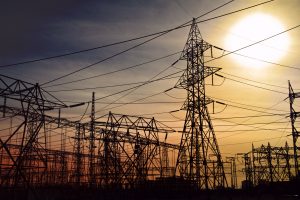So you’ve already taken care of the most cost-effective ways to save energy. You’ve been seeing stories about how much money you can save with solar power — and you’re ready to make your carbon footprint smaller.
Even so, you still have a lot of decisions to make. We’ll cover financing options next week, but here are some important considerations identified by John Sherwin, a senior research engineer at the University of Central Florida’s Florida Solar Energy Center, and Annie Vanek-Dasovich, gulf coast regional manager for the not-for-profit Solar Energy Loan Fund.
First, a couple of things you should know before you start talking to contractors:
- The much-touted tax credit isn’t necessarily the credit you might be expecting. It applies against whatever you owe the IRS but you won’t get a refund check. If your credit is more than what you owe, it can be carried forward for up to three years. (Or you can change your W-2 to reflect those savings so you’ll see more money every month.)
- Installing more panels than you need won’t necessarily make you money. Some contractors talk about the benefits of “net metering,” which allows you to generate more power in the daytime then send it back through the grid for credits on your electric bill. If you don’t use those energy credits within 12 months, the power company will reimburse you for the extra energy – but at much lower wholesale rates than what you pay at retail.

Net metering allows a homeowner to sell power back to their utility — but at wholesale rates not retail. - Today’s solar power systems are not set up to work unless they’re connected to a functioning electrical grid. That means it probably won’t help if your power goes off in a hurricane. It’s a safety feature, Sherwin explains, that protects linemen working on the grid from the electricity your system could backfeed into it.
- Batteries to store solar power so you can get off the grid are becoming more efficient and less expensive, but can still add more than $10,000 to the price of a solar power system and only provide power for about a day. Most experts believe that cost will come down – just as the cost of solar panels already has – as technology improves and demand increases. For now, though, you’re probably better off without them.
With those issues under control, it’s time to talk to contractors. As with any major purchase, get multiple quotes and thoroughly research them. “It’s no different than installing a new AC – you need to do your homework before you sign a contract,” Sherwin said. “Some contractors don’t do the best work, and even if your system passes code, that just means it’s meeting minimum standards.”

Make sure you select a certified solar contractor who is working with a licensed electrician to install your system. If you’re an expert do-it-yourselfer, it is allowed on your own home. “A lot of these panels have been made to be as easy as possible to install, but you need to know what you’re doing,” he adds.
Most panels on the market today have an efficiency rating of 16 to 17% although some panels go up to 20%. The efficiency rating measures the amount of sunlight that is converted to energy, so a higher rating can increase the amount of power you actually capture.
An easy way to determine how much money that extra efficiency will cost – or save – you, is to figure out the cost per watt installed, notes Vanek-Dasovich. “Divide the cost of the system by the number of watts it generates. The lowest price we’ve seen is $1.61 but we’ve also seen it go over $4.00. The average in Tampa Bay works out to $2.20 per watt.”
And be sure that the contractor’s estimate for installation does not include your 30% tax credit. “We’ve heard of some contractors who quote pricing as though you don’t pay the full cost when it’s installed because they want to be the lowest bidder,” Sherwin said.

